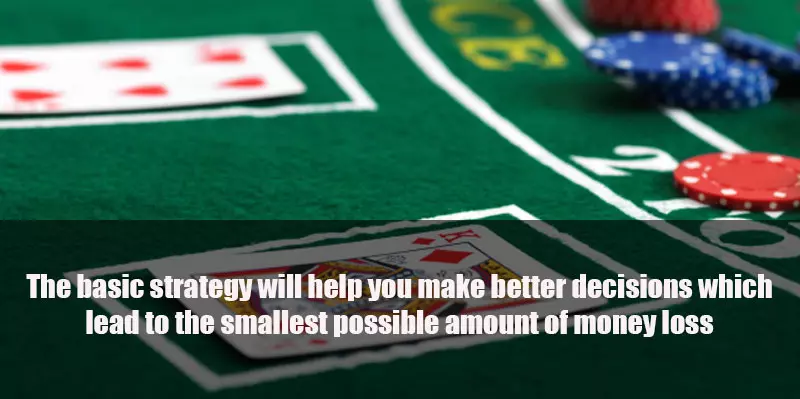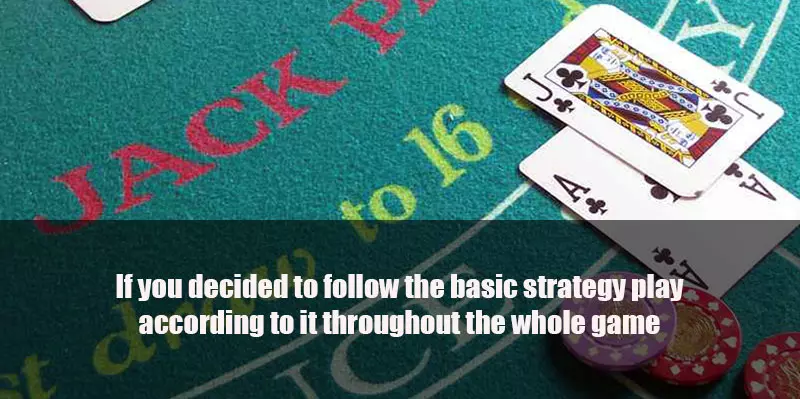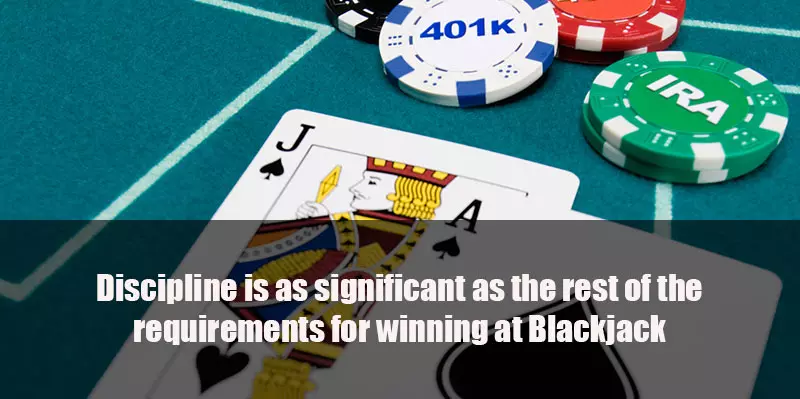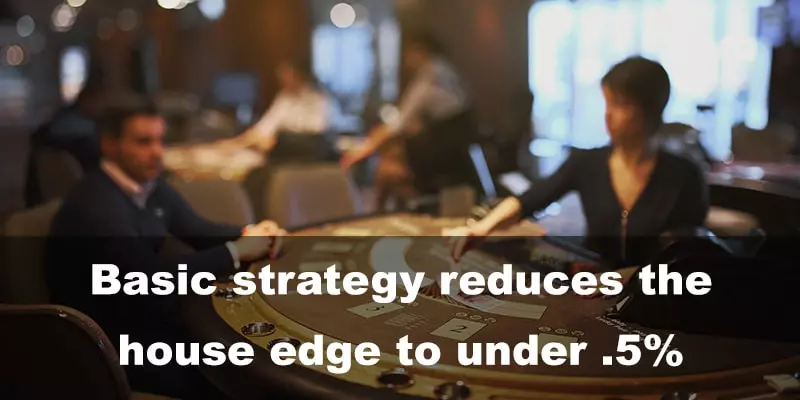Blackjack is a game that requires both knowledge and skills, thus the only way players can win in the long run is if they know the rules of the game very well and follow an appropriate method. One of the most famous among them is the so called basic strategy. It is so popular that the house edge of a particular casino is always estimated providing that the players follow exactly this type of strategy.
The basic strategy shows the best possible moves players can make in a particular situation according to their hand and the dealer’s up card. Even though a great number of gamblers use it on a regular basis, many of them don’t know how to apply it correctly as they lack the thorough understanding of its rules. The basic strategy has many variations which gives gamblers the chance to choose the best one for them.
Basic Strategy History
The history of basic strategy dates as far back as the early 1950s. It was originally devised by four US Army engineers, collectively known as the Four Horsemen of the Apocalypse. And an apocalypse they did bring, or at least if you look at things from the casinos’ perspective, because they laid the foundations for blackjack to become a beatable game.
The engineers published their findings in a statistics journal and attracted the interest of mathematician Edward O. Thorp. He tested the suggested optimal plays of the engineers on an IBM computer to find out they were mostly accurate.
Thorp introduced a few tweaks to the strategy to improve it and went on to develop the first-ever card counting strategy, the Ten Count system, allowing blackjack players the world over to gain an edge over the house.
Mathematicians, statisticians, and gambling experts continued to improve basic strategy over the following decades and gradually refined it to absolute perfection. Another cornerstone in blackjack history occurred in the late 1970s when Peter A. Griffin came up with an even more accurate approach, the composition-dependent basic strategy.
Julian Braun is another person whose contribution is undeniable where basic strategy is concerned. Braun was a computer specialist who worked for IBM for around thirty years. In fact, he assisted Thorp in refining the strategy. On Thorp’s insistence, Braun performed further tests of the moves on the then-powerful IBM 7044 computer and found several discrepancies that called for adjustments.
Braun observed around nine billion different possible combinations of the players’ hands and the dealer’s upcard. His discoveries changed how the game was perceived and played and were the base for many other strategies.
One of his key findings concerned deck composition. Through simulations, Braun established that a deck rich in high-value cards worked to the advantage of players while the excess of low cards tilted the scales in favour of the house. In essence, this led to the invention of many card counting systems blackjack players continue to use to this day.
Reasons to Use the Basic Strategy
Many seasoned players use basic strategy as they know that it gives them everything they need in order to have as much advantage as possible over the casino. It prepares them for every tricky and difficult situation as it shows them how they should proceed in such cases.
Using the basic strategy doesn’t guarantee gamblers a 100% chance of winning a particular hand but it helps them to make better decisions which lead to the smallest possible amount of money loss. Basic strategy is an absolute must because it drastically reduces the edge of casinos.
The exact reduction in percentage is rule-dependent and is also influenced by the deck number the respective blackjack variation uses. All in all, playing the game optimally can decrease the house edge by anywhere between 0.20% and 0.50%. In essence, basic strategists are playing an almost break-even game.

Their loss rates are reduced to as little as £0.50 for every £100 they wager on blackjack with a 0.50% house edge. Some people doubt the efficacy of basic strategy, arguing they have lost or won much larger amounts when sitting down with £100. This is because basic strategy’s efficiency begins to manifest itself when you go through thousands of hands. It is proven to be effective over the long haul.
Without basic strategy, the house edge surges to at least 2%. The long-term losses you will suffer balloon proportionately. Let’s expand further on the ruinous effect not using basic strategy has on misguided gamblers’ bankrolls. Assuming a person who plays intuitively for twenty years, flat betting a pound per hand, they will go through 10,000 rounds annually.
This hypothetical individual plays a hundred hands per hour, clocking roughly a hundred hours at the tables each year. Their cumulative wagers within this timeframe will be equal to 10,000 x £1 x 20 = £200,000.
Assuming conditions were relatively favourable, the house edge grinding at this player’s bankroll was 2%. The expectation of one such person is to lose £200,000 x 2% = £4,000 to the house. The losses will be all the more calamitous if the player’s average wager had been higher.
Meanwhile, a basic strategist faced with a four times lower house edge of 0.50% would have suffered only £200,000 x 0.50% = £1,000 in losses over twenty years, or around £3,000 less than the intuitive player. You decide which scenario is better.
So have patience if you are a blackjack novice and always stick to basic strategy. While the correct plays will not guarantee you win each hand, they will allow you to cut down your losses, increase your overall profits, and help you improve the odds of winning in some situations.
How to Apply Basic Strategy Correctly
As already mentioned, the basic strategy is a great way for players to ensure that they will reduce their losses in the long term. However, in order to do so, they need to put a lot of efforts and time so that they can understand how it works and what lies behind its pattern.
Another very important thing to take into account is that gamblers should always stick to it from the beginning till the end of the game. Many players get discouraged at some point and give up on it which is the worst thing to do.
If they have chosen to follow this strategy in order to make it work, they need to play according to it throughout the whole game. Even if they get a sequence of few losing hands, they need to remember that they won’t determine the final outcome of the game.
Gamblers need to bear in mind that what forms the bigger picture is not the small losses but the dominant outcome at the end of the game. Since the basic strategy consists of the game’s patterns, rules, and mathematical equations based on its odds and probabilities, it can never go wrong.
The bottom line is that if players use it, they will not win every time but in the long term, it will help them a lot. It is worth mentioning that in order to make a profit, gamblers need to possess not only solid knowledge and skills but also money management and discipline. Without them, players are bound to lose every game and there is no way they can change that.

Basic strategy chart
The basic strategy chart is a chart that indicates the best possible move players can make in a particular situation after they receive their first two cards and the dealer’s upcard is revealed. It contains the five main options players can choose from every time – hit, double down, split, surrender, and stand and it operates according to the players’ hand’s total value and the upcard of the dealer. It is worth mentioning that no matter what strategy gamblers follow, they should always take into account the dealer’s upcard.
Nowadays, players can find many variations of the original chart of the basic strategy which gives the chance to see which one works best for them. Of course, it is recommended to follow a well-established one which has already been proven to be reliable and successful as after all, blackjack involves money and every wrong turn can come at a great price.
The charts might seem formidable to novices but in reality, they are incredibly simple to use. The vertical edge of the chart contains all possible totals a player can get. The dealer’s upcards are listed horizontally on top. The optimal move for a given total against a certain upcard is to be found in the boxes where the two intersect.
Another thing worth mentioning is the order of the playing decisions. Some decisions are possible only on starting hands that contain two cards. The first thing you need to consider is whether you should surrender or not, if this is an option at the table you have joined.
You cannot surrender after you have made any of the other possible playing decisions. Splitting is the next thing to consider, then doubling, hitting, and staying. Insurance is of no consideration and is not featured in the charts due to the fact basic strategists should never buy it.
Sometimes certain optimal decisions are impossible either due to house restrictions or because you have already made another move. For instance, you cannot double down on a three-card soft 17 against a 4 although this is the mathematically correct play.
You must execute the second most optimal decision, which is hitting. The great thing about basic strategy charts is they also contain the second-best plays for such instances.
| Basic Strategy Chart | ||||||||||
|---|---|---|---|---|---|---|---|---|---|---|
| Players’ Hand | Dealer’s Up Card | |||||||||
| 2 | 3 | 4 | 5 | 6 | 7 | 8 | 9 | 10 | Ace | |
| 8 | H | H | H | D | D | H | H | H | H | H |
| 9 | H | D | D | D | D | H | H | H | H | H |
| 10 | D | D | D | D | D | D | D | D | H | H |
| 11 | D | D | D | D | D | D | D | D | D | D |
| 12 | H | H | S | S | S | H | H | H | H | H |
| 13 | S | S | S | S | S | H | H | H | H | H |
| 14 | S | S | S | S | S | H | H | H | H | H |
| 15 | S | S | S | S | S | H | H | H | H | H |
| 16 | S | S | S | S | S | H | H | H | H | H |
| A-2 | H | H | H | D | D | H | H | H | H | H |
| A-3 | H | H | D | D | D | H | H | H | H | H |
| A-4 | H | H | D | D | D | H | H | H | H | H |
| A-5 | D | H | D | D | D | H | H | H | H | H |
| A-6 | H | D | D | D | D | H | H | H | H | H |
| A-7 | S | D | D | D | D | S | S | H | H | H |
| A-8 | S | S | S | S | D | S | S | S | S | S |
| A-9 | S | S | S | S | S | S | S | S | S | S |
| Ace-Ace | SP | SP | SP | SP | SP | SP | SP | SP | SP | SP |
| 2-2 | SP | SP | SP | SP | SP | SP | H | H | H | H |
| 3-3 | SP | SP | SP | SP | SP | SP | H | H | H | H |
| 4-4 | H | H | H | SP | SP | H | H | H | H | H |
| 5-5 | D | D | D | D | D | D | D | D | H | H |
| 6-6 | SP | SP | SP | SP | SP | H | H | H | H | H |
| 7-7 | SP | SP | SP | SP | SP | SP | H | H | S | H |
| 8-8 | SP | SP | SP | SP | SP | SP | SP | SP | SP | SP |
| 9-9 | SP | SP | SP | SP | SP | S | SP | SP | S | S |
Key Basic Strategy Moves at a Glance
Basic strategy plays may differ between blackjack variations due to the discrepancies in house rules. The most intuitive moves coincide across all blackjack variants but there may be differences when it comes to trickier plays. The strategy is influenced by the dealer’s drawing and standing rules, how many decks are used, whether late surrender is available, and whether you can double down after splitting pairs.
All these rules bear consideration when choosing a basic strategy chart, or at least if you want to be precise and benefit from the highest possible house-edge reduction. If you rely on a simplified basic strategy, you add roughly 0.30% to the advantage of the casino.
This still puts you at less than 1% disadvantage across the majority of playing conditions. Once you commit to memory all correct plays, you will be able to easily transition between variations and learn the rule-based discrepancies for different games. For starters, be sure to memorise the key basic strategy plays we list below. You can use them in all blackjack games that play with more than two decks.
- Hit hard totals of 8 or lower
- Double down on 10, 9, and 11 when your total is higher than the value of the dealer’s exposed card. Otherwise hit.
- Hit hard 12 through hard 16 when the dealer has a 7 or more, otherwise stand.
- Stand on hard 17 or higher against all dealer upcards.
- Double down on soft 13 through soft 18 when the dealer has a 6 or a 5.
- Double down on soft 17 when the dealer has 3 through 6. Otherwise hit.
- Double down on soft 18 against 3 through 6, stand against 2, 7, or 8, and hit against 9, 10, and ace.
- Stand on soft 19 against all dealer upcards
- Always split 8s and aces.
- Never split 5s and 10s.
- Never buy insurance.
Tips on Learning the Basic Strategy Moves
Basic strategy charts appear formidable at first sight but you can memorise them if you put in enough practice and time. There are various approaches to learning the correct plays. Which method you choose depends on your personal preferences and approach.
Some people prefer to learn the moves through practice by using computer programs or online strategy trainers. This is a great way to memorise the moves because the software gives you hints about the correct decision if you accidentally misplay a hand.
Doubling Down
Splitting Pairs
Blackjack Basic Strategy
Blackjack Hand 8 or 9
Blackjack Hand 10 or 11
Other novices prefer to learn the optimal plays without using a piece of software. One way to achieve this is by buying a deck of cards and practicing blackjack on your kitchen table. There is no need to buy multiple decks even if you intend to play shoe games.
You deal cards both to your hand and the dealer’s hand and refer to the strategy chart you want to memorise. We suggest you begin with the easiest part and learn the moves for hard totals first before you proceed with the pairs and the soft hands.
Another popular way to sear basic strategy into your memory is by using flashcards. You can handcraft these yourself if you wish, although purchasing them online is also an option. There are free printables on the web as well.
The front of the flashcards contains the total of your hand whereas the optimal plays for the corresponding hands are printed at the back. When unsure about the move for a tricky hand, just flip the card over for guidance.
Some online variations of blackjack, and particularly those developed by Microgaming, feature basic strategy suggestions you can turn on and off. You can play their demo versions for free until you commit the strategy to memory and transition to real-money wagers.
Widespread Misconceptions about Basic Strategy
As important as it is, basic strategy is often misunderstood by rookie blackjack players. Some blackjack novices believe the correct plays suggested by the strategy rest on the assumption the dealer always has a ten in the hole. This causes them to deviate from the optimal moves for certain tricky hands, which inevitably costs them money over time.
The assumption is altogether nonsensical since the ten-value cards comprise only 30.8% of a single deck. In other words, there are plenty of other card denominations that could help the dealer improve their hand instead of busting. Novices are further confused by the fact some of the basic strategy plays seem to back the “rule of twenty” assumption.
However, had this been the case, the strategy would have suggested to draw to hard 17 rather than standing when the dealer has 8 through ace. Also, it would have recommended hitting on 11 rather than doubling against the dealer’s ten.

Another common misconception about basic strategy is that it, alone, helps the player gain an edge over the house, which it does not. This would have been the case with single-deck variations where the dealer stands on all 17 (S17), you can double after a split (DAS), and blackjacks pay at odds of 3 to 2.
Unfortunately, such games are virtually impossible to find. At best, you will come across online variants with DAS and S17 but the payouts for naturals have been reduced to 6 to 5, which causes a dramatic surge in the casino’s advantage.
One good example is Play’n GO’s take on Single Deck Blackjack where the house edge is around 1.2% with basic strategy. Blackjack players can gain the upper hand only by adequate game selection, counting cards, and exploiting casino promotions.
Some blackjack players go as far as doubting the efficiency of basic strategy. They play by intuition and even win in the short term due to variance until the tables eventually turn on them, causing them to suffer big losses. Basic strategy is a product of rigid computations and simulations. It has been tested on computers on multiple occasions. Its efficiency is indisputable. Ignore its suggested plays and you are doomed to lose big in the long term.
Composition-Dependent Basic Strategy
So far we have discussed total-dependent basic strategy where you play optimally using limited information, i.e. the value of the dealer’s face-up card and the total of your hand. However, there is a way to further take away from the house edge, causing it to drop even lower. This is achievable by following composition-dependent (CD) basic strategy.
The name explains it all. Here the denominations and the number of cards that comprise the player’s total are also taken into consideration, along with the dealer’s visible card. Blackjack pro Peter A. Griffin introduced the concept of composition-dependent strategy in the late 1970s, describing it in his now-classic book The Theory of Blackjack.
Some of the key deviations from total-dependent strategy concern the plays for hard 16 and hard 15 versus the dealer’s 10, two of the lousiest situations a blackjack player can find themselves in. Let’s tackle the hard 16 against a 10 first. Total-dependent strategy dictates you should surrender the 16 or hit it if the former play is unavailable.

Meanwhile, composition-dependent strategy says that you are better off standing with three-card totals of 16, such as 7-4-5, 9-3-4, and 10-2-4. This is because some of the low-value cards have left the deck, slightly increasing the odds of busting with a hit. One simple way to memorize this deviation is to take notice of whether or not the hand contains a 4 or a 5. If it does, you stand, if not, you hit.
A hard 15 versus a dealer with a ten-value card is another lousy total players are recommended to surrender, if possible. The total should be hit in case late surrender is not offered. Under composition-dependent strategy, the hand should be hit rather than surrendered provided it consists of an 8 and a 7. This is because the odds of busting decrease slightly in favour of hitting with this hand composition. Two of the cards you can bust with have been removed from play.
Another tricky situation is when you hold a hard 12 while the dealer exposes a 4. Players who abide by total-dependent strategy must stand in this case. Composition-dependent strategy, however, states you should hit if your 12 comprises a ten-value card and a deuce and stand with 7-5, 4-8, and 3-9.
The logic here is that you have removed one ten from the deck with 2-10, which leads to a reduction in your odds of busting. And vice versa, a hard 12 consisting of low-value cards calls for a stand because there are more bust cards remaining to be dealt.
Conclusion
The basic strategy gives players a suggestion what will be their best move according to the players’ hand total and the up card of the dealer. It is very accurate and reliable due to the fact that it has been developed and improved greatly over the years so that players can take advantage of it nowadays. The professional opinion of many gamblers is that the basic strategy is the best method players can choose to follow and trust as it’s based on the game’s fundamental principles and patterns.